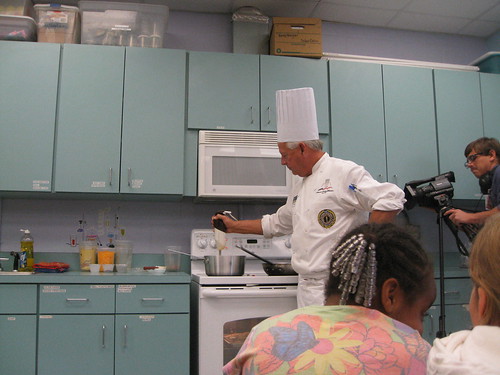
Nothing says autumn like pumpkins fresh from the farm! And since it’s Farm to School month, It’s fitting that I joined Christine Skipp, Lori Hall and their first grade class at RB Hunt Elementary School, in St. Augustine, Fla. to sample 11 different varieties of pumpkins. We took advantage of this fall’s harvest from the University of Florida's Institute of Food and Agricultural Sciences farm in Hastings, Fla.
Tasty pumpkin-based recipes were prepared by Chef David Bearl of the American Culinary Federation. The dishes included a salad, chili, and pizza, and a wonderful butternut soup. I never knew pumpkins could be prepared in so many delicious ways. The rest of the school’s students also had some of the harvested pumpkins in their lunch meal for the day.
While I was there, I got to see the kids participate in a small exercise with the chef on how cooking can teach language, history, math, and science. They also colored in the different food groups on ChooseMyPlate sheets. It was great to see nutrition education being emphasized—it’s important to getting kids off to a healthy start.
Chef Bearl, who also joined forces with the First Lady’s Let’s Move! initiative as part of Chefs Move to Schools, was enthusiastic about sharing his culinary expertise and helping the children learn about nutrition and where food comes from. “The Farm to School, Farm to Table, and the First Lady’s Chefs Move to Schools movements are the most exciting things happening in food today,” he said.

Farm to School programs are a way to connect schools (K-12) with regional or local farms in order to serve healthy meals using locally produced foods. Farm to school activities not only provide fresh, locally-produced food to school meals programs, but also provide small farmers with new marketing opportunities and school children with the opportunity to learn about how food is produced and harvested for consumption.
Partnerships like we have with farmers, chefs, and the American Culinary Federation are essential to helping our nation’s children develop nutritional habits that last a lifetime. Because of their unique standing in the community, chefs are able to educate children about healthy food choices and help them understand their role in achieving and maintaining a healthy weight.
